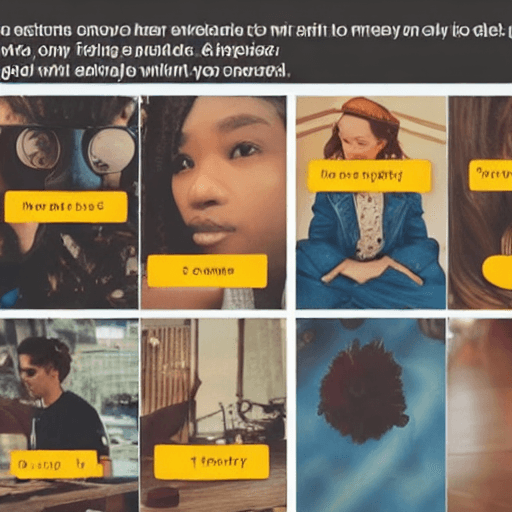

Snapchat has evolved far beyond just fleeting snaps and disappearing messages. It’s become a powerful platform for brand engagement, creative expression, and, increasingly, sophisticated storytelling. The core of this storytelling potential lies within Snapchat Lenses – augmented reality filters that allow users to interact with the world in a playful and immersive way. But simply slapping a filter on a face isn’t enough. To truly leverage the power of Snapchat Lenses for storytelling, you need to understand the principles of narrative construction and how to apply them within this unique environment. This comprehensive guide will delve into the art of crafting compelling narratives using Snapchat Lenses, providing you with the knowledge and techniques to create engaging experiences that resonate with your audience.
Traditionally, advertising has relied on static images and lengthy video ads. Snapchat, with its emphasis on authenticity and real-time interaction, has disrupted this model. Lenses offer a fundamentally different approach – one that invites users to become active participants in the story. Instead of passively watching, users are encouraged to experiment, share, and create their own versions of the narrative. This shift has opened up exciting possibilities for brands and creators looking to connect with audiences on a deeper level. The key is to move beyond simple gimmickry and embrace the inherent storytelling potential of the Lens format. This isn’t about creating a traditional movie; it’s about sparking moments of joy, surprise, and connection.
Before diving into storytelling techniques, it’s crucial to understand the technical and creative constraints of Snapchat Lenses. Lenses are essentially interactive augmented reality experiences built within Snapchat’s platform. They typically involve a face tracking component, allowing the Lens to recognize and interact with the user’s face. Beyond face tracking, Lenses can incorporate various effects, animations, and interactive elements. The length of a Lens story is generally limited, often around 15 seconds, though longer Lenses are becoming more common. This constraint forces creators to be concise and impactful. Furthermore, the ephemeral nature of Snapchat – where content disappears after viewing – adds a sense of urgency and encourages immediate engagement.
Snapchat’s face tracking technology is the foundation of most Lenses. It allows the Lens to accurately map the user’s facial features, enabling effects like adding virtual makeup, changing hair color, or creating cartoonish transformations. However, simply relying on face tracking isn’t enough. The most compelling Lenses use face tracking as a springboard for interactive storytelling. Consider a Lens that asks the user to make a silly face, triggering a specific animation or sound effect. This simple interaction creates a moment of playful engagement.
Snapchat offers various Lens types, each with its own capabilities:
Applying traditional narrative principles to Snapchat Lenses requires a slightly different approach than traditional storytelling. Here are key principles to consider:
1. Establish a Clear Hook: The first few seconds of a Lens are critical. You need to immediately grab the user’s attention and make them want to continue watching. This could be a surprising visual effect, a humorous animation, or a compelling question.
2. Introduce a Character (Even a Simple One): Even in a short Lens, having a character – even a virtual one – helps to create a sense of connection. This character can be the driving force of the narrative.
3. Conflict and Resolution (Miniature Scale): While a full-blown conflict isn’t realistic in a 15-second Lens, you can still create a sense of tension or resolution. Perhaps the character needs to solve a simple puzzle or overcome a minor obstacle.
4. Show, Don’t Tell: Lenses are visual mediums. Use animations, effects, and visual cues to convey the story, rather than relying on dialogue or narration.
5. Call to Action (Subtle): Encourage engagement by prompting the user to perform a specific action, such as making a funny face or tapping on a screen.
Let’s break down the process of creating a compelling Lens story:
Example 1: McDonald’s “McRib” Lens: This Lens allowed users to virtually “eat” a McRib sandwich. The Lens tracked the user’s mouth movements, and as they moved their mouth, a virtual McRib appeared to be disappearing into their mouth. This was a highly engaging and shareable experience that generated significant buzz.
Example 2: Nike “Just Do It” Lens: This Lens featured a motivational message overlaid on the user’s face, encouraging them to “Just Do It.” The Lens used dynamic animations and sound effects to create an energetic and inspiring experience.
Example 3: Dove “Real Beauty” Lens: This Lens allowed users to transform their appearance, highlighting the concept of self-acceptance and celebrating natural beauty. The Lens used subtle animations and positive affirmations to promote a message of confidence.
1. Keep it Short and Sweet: Respect the user’s attention span. Aim for a concise and impactful experience.
2. Prioritize Engagement: Focus on creating interactive elements that encourage the user to participate.
3. Optimize for Mobile: Ensure that the Lens is optimized for mobile devices. Test it on various screen sizes and resolutions.
4. Track Your Results: Monitor the performance of your Lens. Analyze metrics such as views, shares, and engagement rates.
Snapchat Lenses offer a powerful way to connect with your audience in a fun and engaging way. By understanding the principles of narrative storytelling and utilizing the capabilities of Lens Studio, you can create memorable experiences that drive brand awareness and generate buzz. Remember to prioritize engagement, keep it concise, and continuously optimize your Lenses based on user feedback and performance data.
Disclaimer: This information is for general guidance only. Specific requirements and capabilities may vary depending on Snapchat’s current offerings.
Thank you for reading!
—End of Document—
Tags: Snapchat, Lenses, storytelling, narrative, engagement, marketing, advertising, brand storytelling, augmented reality, AR, Snapchat ads
[…] core of a successful Snapchat lens is its ability to react to the user’s movements and environment. A simple lens might just rotate […]